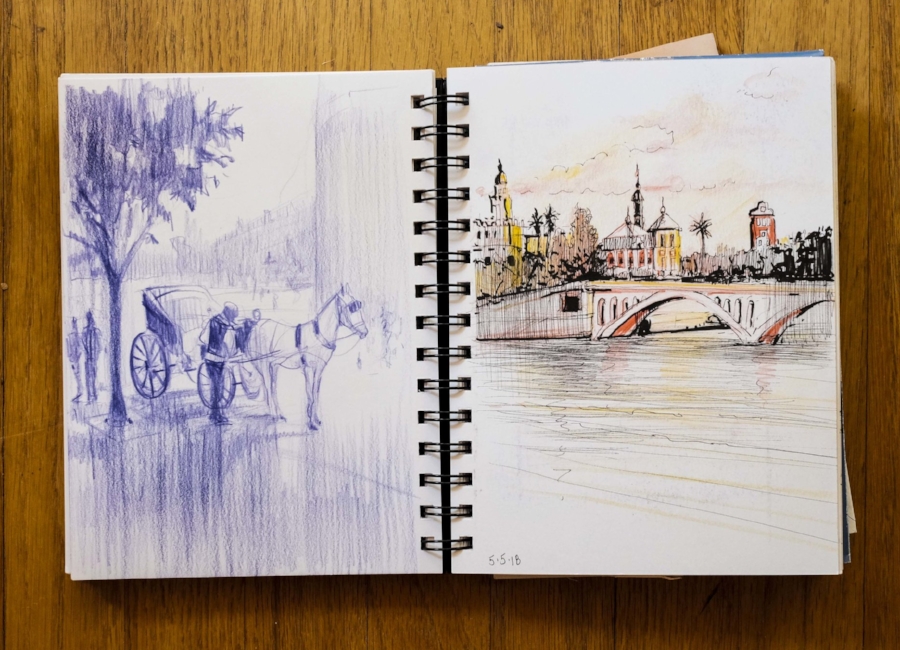The desert can be an inhospitable place. High temperatures and low humidity are a given. Still, the brutal reality of no shade, little vegetation, and scarce water sources, make this an unusual destination for a landscape painter, particularly water media painting. Even so, it's hauntingly beautiful. Colors change throughout the day from a cadmium orange at sunrise to the shocking white sunlight on the crystalline salts of the empty lake beds at noon. And, the day ends with a cobalt violet sunset and a finale of stars after nightfall!
In the desert, the horizon is always just out of grasp. Often a single road disappears into the distance, and not one building, road sign, or cactus obscures the vast emptiness. As a painter, the challenge is often the simplicity. With this stark minimalism, I find beauty in the sculptured mountains—where the hot shimmering sky meets the alluvial fan of rugged terrain.
Death Valley, an unforgiving environment, is where I have chosen to make a home for a week while I paint. We set up camp on a plateau rather than the valley oasis of Furnace Creek. On the elevated land of Texas Springs, I find the best views to watch and paint the ever-changing skies.
I first experiment with the "wet into wet" technique. This process calls for an initial pass of clear water across the paper before I dip the brush back into the palette, loading it with color. With a touch of the brush to the wet paper, the colors bloom across the page organically. Did I say wet paper? Well, because of the incredibly low humidity, the paper nearly dries before I can return the brush to the surface. I am compelled to work quickly and, therefore, must not overthink my brush strokes.
I schedule my painting for the early morning before the sun becomes too hot and I can no longer paint. I set up my three-legged stool and easel in the shade of our little trailer. As the day wears on, the shadow cast by the trailer is consumed by the hot desert sun. I race against time and heat to capture the desert's treasures.
I found in Death Valley, not death, but a ghostly and heavenly life of natural beauty. With pigments bending into water, I attempt to convey what it feels like to be in a place not just of sand and emptiness, but a place of meditation and spirit!
Happier Camper, my mobile art studio in the desert.



















